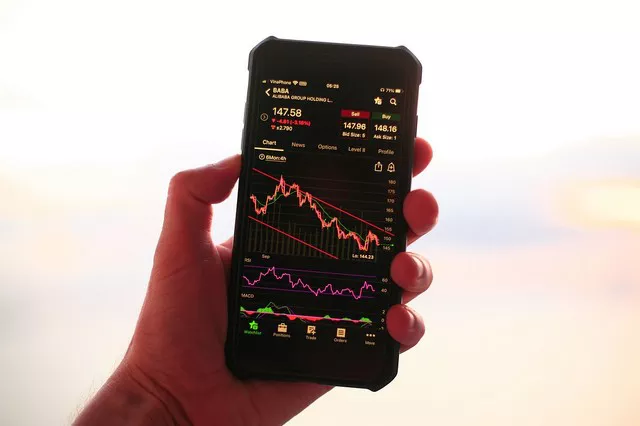In the dynamic world of futures trading, market participants often find themselves engaged in contracts with varying expiration dates. Futures rollover is a strategic maneuver employed by traders to seamlessly transition from expiring contracts to new ones. This process ensures continuity in their trading positions and helps mitigate potential disruptions.
Understanding Futures Contracts
Before delving into the mechanics of futures rollover, it’s essential to grasp the fundamentals of futures contracts. Futures contracts are standardized agreements to buy or sell an asset at a predetermined price on a specified future date. These contracts play a vital role in various financial markets, including commodities, currencies, and indices, providing a platform for price discovery and risk management.
Expiration Dates and Rollover Cycles
Futures contracts have expiration dates, signaling the point at which the contract matures, and physical delivery or cash settlement occurs. Traders who wish to maintain their positions beyond the expiration of a contract must initiate a rollover. Rollover involves closing out the expiring contract and simultaneously opening a position in a contract with a later expiration date, allowing for a seamless transition in the market exposure.
Reasons for Rollover
Traders opt for futures rollover for various reasons, primarily centered around avoiding potential disruptions in their trading strategies. One common reason is the desire to extend exposure to an asset without liquidating and re-establishing positions. Additionally, traders may choose to rollover to avoid taking physical delivery of the underlying asset, as many market participants engage in futures trading for speculative purposes rather than for the intention of taking possession of the actual commodity.
Contract Months and Liquidity Considerations
Futures contracts are often offered with various expiration months, providing traders with flexibility in choosing the duration of their market exposure. However, not all contract months exhibit the same level of liquidity. Traders must consider liquidity, as more actively traded contracts generally offer tighter bid-ask spreads and reduced slippage. Rollover decisions are influenced by a careful evaluation of liquidity conditions in different contract months.
The Rollover Process
The rollover process involves a series of coordinated steps to seamlessly transition from one futures contract to another. Traders typically initiate the rollover a few weeks before the expiration date of the current contract. The specific steps may include closing out the existing position in the expiring contract, assessing market conditions, and executing new positions in contracts with extended expiration dates.
Factors Influencing Rollover Decisions
Traders must navigate a range of factors when deciding the timing and selection of contracts for rollover. Market volatility, liquidity, and the trader’s overall strategy are critical considerations. Some traders may prefer to rollover well in advance to avoid potential liquidity issues or adverse market conditions, while others may choose to wait for specific signals or economic events before initiating the transition.
Impact on Trading Costs
Rollover decisions can have implications for trading costs, including transaction fees and potential slippage. Traders should be mindful of the costs associated with closing out and opening new positions. The bid-ask spread, which represents the cost of entering or exiting a position, is an essential consideration, especially in less liquid contract months.
Strategic Considerations for Rollover
Successful rollover strategies are often built on a foundation of thorough analysis and strategic planning. Traders may incorporate technical analysis, examining price charts and trends, to identify optimal entry and exit points for the rollover. Additionally, fundamental analysis, such as assessing economic indicators and market news, can inform decisions about the timing of the transition.
Seasonal Patterns and Rollover
Certain futures markets exhibit seasonal patterns that traders may factor into their rollover decisions. For commodities like agricultural products or energy, seasonal demand variations can influence the timing of rollover. Traders may align their rollover strategies with these seasonal patterns to capitalize on potential opportunities or avoid unfavorable market conditions.
Considerations for Different Asset Classes
The approach to futures rollover can vary across different asset classes. Traders involved in commodities, such as energy or agricultural products, may be particularly sensitive to supply and demand dynamics and geopolitical events. In contrast, equity index futures traders may focus on macroeconomic indicators and corporate earnings reports when making rollover decisions.
The Role of Roll Yield
Roll yield, also known as the roll return, is a factor that traders consider during futures rollover. It reflects the potential profit or loss associated with the change in the futures contract’s price during the rollover period. Traders may analyze historical roll yield data and market conditions to optimize their rollover decisions and enhance overall performance.
Monitoring Rollover Dates and Expirations
Rollover decisions are time-sensitive, requiring traders to stay informed about contract expiration dates and rollover periods. Futures exchanges typically provide information on contract months, expirations, and rollover dates. Staying abreast of these details is crucial for executing rollover strategies effectively and avoiding any unintended consequences.
Conclusion
Futures rollover is a strategic maneuver employed by traders to ensure a seamless transition from expiring contracts to new ones. This process is driven by the desire to maintain market exposure, manage risk, and optimize trading strategies. Traders must navigate factors such as liquidity, trading costs, and strategic considerations when making rollover decisions. A well-executed rollover strategy enhances a trader’s ability to adapt to changing market conditions and positions them for continued success in the dynamic world of futures trading. As with any trading strategy, a nuanced understanding of the specific market, asset class, and individual trader objectives is key to mastering the art of futures rollover.


